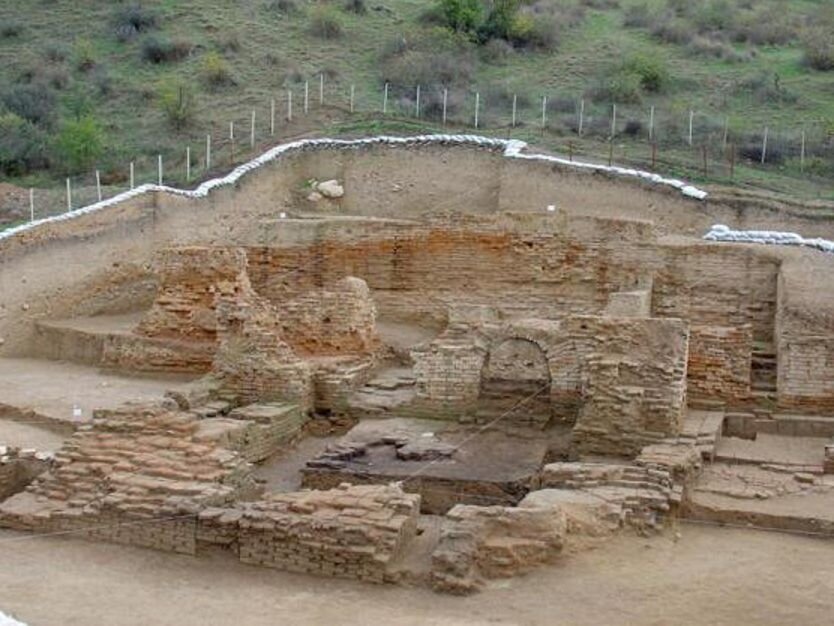Great Wall of Grogan: excavations give clues to life in northern Iran

TEHRAN – Archaeologists have been able to provide insights into the life of Persian soldiers and locals whose remains were found near the Great Wall of Grogan in northern Iran.
Stretched across Golestan province, the defensive wall is about 200 km in length and it was built to prevent the invasion of the northern tribes of the time. It is said to be the longest architectural work of ancient Iran, which was completed in 90 years.
“During recent excavations, we conducted a study on the diet of Sassanid soldiers and native people of the region who lived adjacent to the wall and its associated structures,” ILNA quoted archaeologist Hamid Omrani Rakavandi as saying on Monday.
“We have concluded that meat constituted their main diet,” said the archaeologist who presides over the cultural heritage office of the lengthy barrier.
“Excavations revealed [fossilized] remains of beef and mutton expected to constitute the main diet of the locals who also ate a kind of native deer existed nearby.”
The ancient residents were also consuming pork though its consumption started to decrease by the advent of Islam, the archaeologist explained.
“Wheat, barley, grapes, walnuts and seabirds, and fish are other foods consumed by the people of the region.”
Speaking about the then atmosphere of the barrier, Omrani Rakavandi said: “There are remnants of moats, fortresses, brick kilns, water canals, embankment dams, and other structures, which were made along the Great Wall of Gorgan during the Sassanid era (224-651 CE).”
“Next to the wall, we also discovered more than 25 military areas, which were used probably as the residence of the people and indigenous communities during peacetime. Yet, they were used as places for training Sassanid soldiers during wartime,” he stated.
“All of these have been mentioned in historical sources and we have been discovered them during archaeological excavations.”
Also known as Red Wall, which in some ancient texts is referred to as the Red Snake, this wall is the longest brick ancient barrier between Central Europe and China, longer than Hadrian’s Wall and the Antonine Wall put together and the third-largest wall in the world after the walls of China and Germany.
Most parts of the gigantic monument are still hidden underneath the surface through some segments that have so far been unearthed and even restored to former glory.
Archaeological excavations have so far identified ditches, brick kilns, earthen dams, water canals, 38 forts, and watchtowers attached to the wall, and more than 25 castles in the southern margin of the wall as well as several ancient sites from prehistoric, historic, and Islamic eras.
The gigantic barrier is also more than three times the length of the longest late Roman defensive wall built from scratch, the Anastasian Wall west of Constantinople. The combined area of the forts on the Gorgan Wall exceeds that of those on Hadrian’s Wall about threefold.
According to UNESCO, the Gorgan Wall is remarkable not only in terms of its physical scale but even more so in terms of its technical sophistication. To enable construction works, canals had to be dug along the course of the defensive barrier, to provide the water needed for brick production. These canals received their water from supplier canals, which bridged the Gorgan River via qanats. One of these, the Sadd-e Garkaz, survives to 700 m in length and 20 m in height but was originally almost one kilometer long.
The Gorgan Wall and its associated ancient military monuments provide a unique testimony to the engineering skills and military organization of the Sassanian Empire. They help to explain its geographic extent, from Mesopotamia to the west of the Indian Subcontinent, and how effective border defense contributed to the Empire’s prosperity in the interior and its longevity. These monuments are, in terms of their scale, historical importance, and sophistication, of global significance.
Golestan is reportedly embracing some 2,500 historical and natural sites, with UNESCO-registered Gonbad-e Qabus – a one-millennium-old brick tower – amongst its most famous.
AFM

Leave a Comment